Kedah |
|
|
|
| Übersicht – Contents: | |
Diese Seite ist Teil des Projektes
Kedah |
|
|
|
| Übersicht – Contents: | |
Flaggen – Flags: |
|
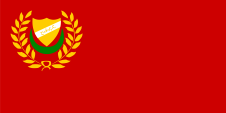 |
Nationalflagge – national flag, Seitenverhältnis – ratio = 1:2, Quelle/Source: Die Welt im bunten Flaggenbild |
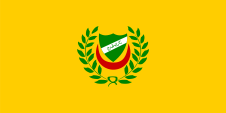 |
Standarte des Sultans – standard of the Sultan, Seitenverhältnis – ratio = 1:2. Quelle/Source: Die Welt im bunten Flaggenbild |
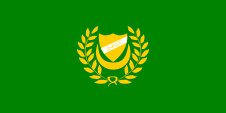 |
Flagge des Temenggong (Premierminister) – flag of the Temenggong (Prime Minister), Seitenverhältnis – ratio = 1:2, Quelle/Source: Die Welt im bunten Flaggenbild |
historische Flaggen – historical Flags: |
|
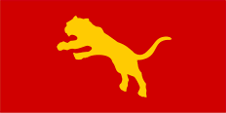 |
1821–1912, Nationalflagge – national flag, Quelle/Source, nach/by: Die Welt im bunten Flaggenbild, Wikipedia (EN) |
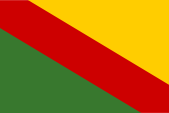 |
bis/to 1948, Handelsflagge – merchant flag, Seitenverhältnis – ratio = 2:3, Quelle/Source: Die Welt im bunten Flaggenbild |
Bedeutung/Ursprung der Flagge – Meaning/Origin of the Flag: |
|
| Kedah ist ein sehr alter Staat, der in frühen Zeiten, wahrscheinlich islamisch beeinflusst, eine einfarbig rote Flagge verwendete, was auch auf das Sultanat Aceh zurückgehen könnte, von dem Kedah zeitweise abhängig war. Ab 1821 scheint eine einfarbig rote Flagge überliefert, die in gelb die Silhouette eines springenden Tigers zeigte. Sie wurde, wenn man den Quellen trauen kann, offenbar bis 1912 verwendet, als das heutige Modell mit dem Staatswappen in der Oberecke eingeführt wurde. Dann wurde, zur Unterscheidung, ein nationales Symbol in den Farben Gelb und Grün in der Oberecke angebracht. Die Nationalfarben Gelb, Grün und Rot erschienen in diagonaler Anordnung auch auf der Handelsflagge des Landes. Die Farben sind für malaysische Verhältnisse ungewöhnlich, denn Gelb (und nicht Weiß) ist die Farbe des Sultans und Grün (und nicht Gelb) ist die Farbe des Temenggong. Das Symbol des Halbmondes ist ein deutlicher Hinweis auf die vorherrschende Religion, den Islam. |
Kedah is a very old state that in early times, probably influenced by Islam,
used a solid red flag, which could also go back to the Sultanate of Aceh, on
which Kedah was temporarily dependent. From 1821 onwards, a solid red flag
appears to have survived, with the silhouette of a leaping tiger in yellow.
If the sources are to be trusted, it was apparently used until 1912, when
the present model with the national coat of arms in the upper corner was
introduced. Then
they added a national symbol in the colours yellow und green for
differentiation in the upper staff quadrant. The national colours yellow,
green and red appeaed in diagonal arrangement also on the merchant flag of
the country. The colours are uncommon for Malaysian situations, because yellow (and not white) it the colour of the Sultan and green (and not yellow) is the color of the Temenggong. The symbol of the half-moon is a clear hint for the predominant religion, the Islam. |
| Am 01.04.1946 wurde das Land Mitglied in der Malaiischen Union. Die Malaiische Union wurde 1948 reorganisiert und zur Malaiischen Föderation unter einem britischen Hochkommissar umgebaut, die 1957 als Königreich Malaiische Föderation die Unabhängigkeit von Großbritannien erreichte. 1963 erfolgte dass die Gründung des Königreiches Malaysia. Die ab 1948 gemeinsame Wirtschafts- und Verteidigungspolitik machte die Marine- und auch Handelsflaggen der Mitgliedsstaaten überflüssig. | On 1st of April in 1946 the country became a member in the Malay Union. The Malay Union was reorganized in 1948 and converted to the Malay Federation under a British High Commissioner, which reached the independence from United Kingdom in 1957 as the Kingdom of the Malay Federation. In 1963 was the founding of the Kingdom of Malaysia. The from 1948 common politics in foreign affairs and economy made the naval and even the merchant flags of the membering states unnecessary. |
| Rot ist im Gebiet des Indischen Ozeans und des Persischen Golfs eine traditionelle Flaggenfarbe, die in engem Zusammenhang zum Islam steht, denn es ist die Farbe der Scherifen von Mekka, und ist ein Symbol der im östlichen Arabien lebenden islamischen Charidschiten. Rote Flaggen haben bzw. hatten die arabischen Emirate, Omans oder auch Sansibar, ebenso alle islamischen Dynastien, die sich auf die Herkunft von den Alawiten berufen (auch Aliden genannt, Abkömmlinge Ali's → z.B. heutiges Marokko, früheres Nordjemen). | Red is in
the area of the Indian Ocean and the Persian Gulf a traditional flag's
colour with close connections to the Islam, because it is the colour of the
Sherifs of Mekka, and it is a symbol of the in the eastern Arabia living
islamic Chahridshites. Red flags have and had the Arabian Emirates, Oman or also Zanzibar, just as all islamic dynasties, which descent from the Alawites (as well Alides, descentants of Ali → e.g. today's Morokko, former North Yemen). |
| Quelle/Source: Die Welt im bunten Flaggenbild, Wikipedia (EN), Die Welt der Flaggen, Flaggen Enzyklopädie | |
Wappen – Coat of Arms: |
|
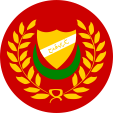 |
Wappen von Kedah – coat of arms of Kedah, Quelle/Source: Wikipedia (EN) |
Bedeutung/Ursprung des Wappens – Meaning/Origin of the Coat of Arms: |
|
| Das Wappen von Kedah zeigt einen einfarbigen Wappenschild (Symbol der Macht), normalerweise in Gold mit dem Namen des Landes in arabischer Jawi-Schrift auf einem silbernen Band (es gibt auch Darstellungen auf denen das Band mit dem Namen einfach weggelassen wird), unterhalb davon einen Halbmond, das Symbol des Islam, umgeben von einem Kranz aus Padi-Getreide, welches die Fruchtbarkeit des Landes symbolisiert. | The coat of arms of Kedah shows a single-coloured shield
(symbol of power), usually in gold and with the name of the country in Arabic
Jawi characters on a silvery ribbon (there are also reproductions on which the band with the name of the state is just omitted), and below it a crescent, the symbol of Islam, surrounded by a wreath of Padi Grain spikes, symbolizing the fertility of the country. |
| Quelle/Source: Die Welt im bunten Flaggenbild, Flaggen Enzyklopädie | |
Landkarte – Map: |
|
Lage auf der Malaiischen Halbinsel – Position on the Malay Peninsula: |
|
|
| Die Bundesstaaten Malaysias – the Federal States of Malaysia: |
| interaktive Landkarte – interactive Map |
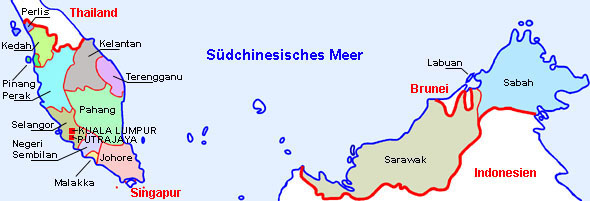 Landkarte/Map: Volker Preuß nach/to Malaysia? => hier klicken – click here |
Zahlen und Fakten – Numbers and Facts: |
|
|
|
|
|
|
|
|
|
|
|
|
|
|
|
|
|
|
|
|
7.–11. Jhd. · zum Reich Shrividjaja 11. Jhd. · erste Erwähnung eines Staates Kadaram (Kedah) in der Region 12. Jhd. · Islamisierung 14.–15. Jhd. · zum Reich Siam 15. Jhd. · Eroberung durch Malakka 17. Jhd. · Angriffe durch Portugiesen, Kedah kommt vorübergehend unter Kontrolle des Sultanats Aceh 1786 · der Sultan von Kedah übergibt die Insel Pinang den Briten, als Schutzgarantie gegen Siam 1800 · die Briten errichten im heutigen Butterworth eine Kolonie (ab 1867 als 'Wellesley' zu den Straits Settlements), beginnender britischer Einfluss in Kedah 1821 · Truppen aus Siam besetzen Kedah und gliedern es als "Syburi" ihrem Reich an 1842 · Siam trennt Perlis als Fürstentum von Kedah ab, ab 1843 von einem Radscha aus dem Hause Kedah regiert 1896 · Kedah und Perlis werden zur siamesischen Provinz "Monthon Syburi" vereinigt 1909 · Anglo-Siamesischer Vertrag, die heutige Grenze zwischen Malaysia und Thailand entsteht, denn Siam tritt Kedah, Kelantan, Perlis und Terengganu an Großbritannien ab und fasst diese Länder 1914 mit Johor zu den "Nichtföderierte Malaienstaaten" zusammen 1941-1943 · von japanischen Truppen besetzt 1943–1945 · Anschluss an Thailand 01.04.1946 · Bildung der Malaiischen Union durch Zusammenschluss der Malaiischen Sultanate (Britische Protektorate) und der Straits Settlements (Britische Kronkolonien), jedoch ohne Singapur 1948 · Reorganisation der Malaiischen Union, Bildung der Malaiischen Föderation unter einem britischen Hochkommissar 31.08.1957 · Unabhängigkeit und Proklamation des Königreiches Malaiische Föderation 16.09.1963 · Proklamation des Königreiches Malaysia |
|
7th–11th cent. · to the Shrividjaja Empire 11th cent. · first mention of a state of Kadaram (Kedah) in the region 12th cent. · Islamisation 14th-15th cent. · to the empire of Siam 15th cent. · Conquest by Malacca 17th cent. · Portuguese attacks, Kedah temporarily comes under the control of the Sultanate of Aceh 1786 · the Sultan of Kedah hands over the island of Penang to the British, as a guarantee of protection against Siam 1800 · the British establish in the today's Butterworth a colony (since 1867 as 'Wellesley' to the Straits Settlements), beginning British influence in Kedah 1821 · Siamese troops occupy Kedah and annex it to their empire as "Syburi" 1842 · Siam separates Perlis from Kedah as a principality, from 1843 ruled by a Rajah from the House of Kedah 1896 · Kedah and Perlis are united to form the Siamese province of "Monthon Syburi" 1909 · Anglo-Siamese Treaty, the present-day border between Malaysia and Thailand is created, as Siam cedes Kedah, Kelantan, Perlis and Terengganu to United Kingdom and later combines these countries in 1914 with Johor to form the "Non-Federated Malay States" 1941-1943 · occupied by Japanese Troops 1943–1945 · annexed to Thailand 1st of April 1946 · creation of the Malaysian Union by confederation of the Malaysian Sultanates (British protectorates) and the Straits Settlements (British crown colonies), however without Singapore 1948 · re-organization of the Malaysian Union, creation of the Malaysian Federation under a British High Commissioner 31st of August 1957 · independence and proclamation of the Kingdom of Malaysian Federation 16th of September 1963 · proclamation of the Kingdom of Malaysia |
| Quelle/Source: Atlas zur Geschichte, Wikipedia (D), Discovery '97 |
Ursprung des Landesnamens – Origin of the Country's Name: |
|
| Der Staat Kedah und auch sein Name ist sehr alt, er wurde bereits im 2. Jahrhundert in einem tamilischen Gedicht als "Kadaram" erwänt, in der indischen Literatur war das Land zu unterschiedlichen Zeiten unter dem Namen "Kataha" bekannt. Wahrscheinlich wurde der Staatsname erstmals als "Kedah" im Jahre 1136 erwähnt, als als König Phra Ong Mahawangsa zum Islam konvertierte und den Namen Sultan Mudzafar Shah annahm. |
The state of Kedah and also its name is very old, it was already mentioned
in the 2nd century in a Tamil poem as "Kadaram", in Indian literature the
country was known at different times under the name "Kataha". The state name was probably first mentioned as "Kedah" in 1136, when King Phra Ong Mahawangsa converted to Islam and adopted the name Sultan Mudzafar Shah. |
| Quelle/Source: Wikipedia (EN) | |